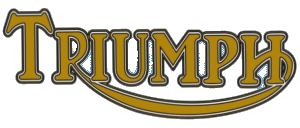



The 1920 4 h.p. chain-driven Triumph. This model is fitted with an entirely new design of three-speed gear.
IT has long been an open secret that the Triumph Cycle Co. contemplated an all-chain driven model. Nine months ago we were permitted to make an extended trial of one of the early experimental models, which, we may say, demonstrated the advance made in single-cylinder machines for sidecar work. To a certain extent the firm showed their hand by entering machines of this type in the A.C.U. Trials...
The 4 h.p. engine, which has already earned an enviable reputation for reliability and pulling power, both under strenuous war conditions and in everyday use, remains unaltered, save for special bosses on the crank case to provide fixings tor the chain case. It is in the transmission that the most important features lie...
The Triumph Junior (two-stroke) remains unaltered, and will sell at £63. In addition, a 3 1/2 h.p. competition machine is on the stocks...
The Triumph range, already comprehensive, has been still further increased by the addition of an entirely new model, the 4.94 h.p. type P. It is a single-cylinder machine, with side-by-side valves. The crankshaft is equipped with a shock absorber which takes the form of a helical cam, which is resisted by the action of a spring, so that all harshness is eliminated from the drive. No alterations have been effected to the 5.50 model, none having been found to be needed. The same remarks apply to the 4.99 h.p. overhead-valve model. The 3.46 h.p. machine embodies an engine, gear box and. clutch, which are built into one unit. Several examples of all models are shown on this stand, as well as of Gloria sidecars."
Triumph Cycle Co., Ltd., Coventry.
An article on the 1926 Tourist Trophy Races reads:
The T.T. Triumphs are extremely interesting machines and depart considerably from anything previously emanating from the Coventry works. The two-valve engine is modelled on the machines used so successfully at Brooklands by Victor Horsman, but now boasts two exhaust ports. The push rods and tappets are totally enclosed, and the magneto is placed behind the engine, thus allowing the latter to be brought well forward.
A large two-piece tank is strapped securely to the top tubes, and a separate oil tank behind the saddle tube. These are not shown in the photograph. A Triumph three-speed gear is fitted, with a new form of gear lever, having a concealed gate and a positive stop for middle gear. The forks are a new type, with a single tension spring and friction dampers. Eight-inch brakes are fitted front and rear.
The riders include H. Willis, who has performed well on a Montgomery, W. Evans, a scramble specialist, and C. H. Young, the South African."
In spite of its avoirdupois, under way the T.T. Triumph handled like any good lightweight, while the engine ran quietly, ticked-over without mechanical chatter, and was beautifully smooth, vibration, and then only a trace, intruding only at over 80 m.p.h. in the lowest ratio. Starting was normally "two-prod," unless the forgetful rider did not turn off the oil, allowing an excess to syphon into the engine.
Like many other makers, Triumphs fitted excessively large (wired-on 26 by 8.25) Dunlops, and failed to provide a ribbed tyre on the front wheel, while the rear wheel seemed to have a distinct aversion to staying on the ground, particularly when the rear brake, which seemed to be out of truth, was applied. The front brake, operated by the right hand, was smooth and powerful, the clutch and gear-change delightful and the Triumph never gave signs of great exertion no matter how hard it was ridden. The riding position, location of adjustable bars and footrests and brake pedal, and the supple Brooks saddle were all highly praised, while the Triumph could be put over at tremendous angles for cornering without the footrests fouling.
Roadholding was dismissed as "distinctly good," the report including a lurid account of hitting an arch-pothole at 40 m.p.h., both stands clattering down, but the Triumph immediately repressing the resultant lurch. Even on a good surface, standing starts in a 10 to 1 gear produced wheelspin and gear-changing produced a satisfying sideways twitch of the rear wheel. The makers claimed 75 m.p.h., which was considered a modest estimate and the tester liked this Triumph as having all the essentials of a fast roadster, unimpeded by the separate oil tanks, large petrol tank and ponderous silencers of the I.O.M. or Brooklands model or the large mudguards, legshields and carrier of the touring machine. It looked a decent model and the 1927 price was £66."
"
Source: Graces Guide